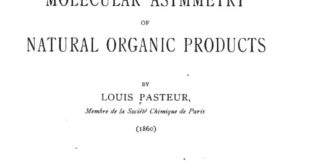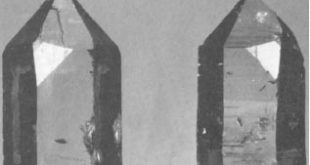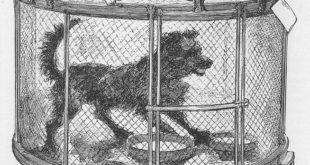Memoirs by Pasteur, Van’t Hoff, Lebel, and Wislicenus
General Contents
- Preface
- The Asymmetry of Naturally Occurring Organic Compounds. By Louis Pasteur
- Biographical Sketch of Pasteur
- Structural Formulas in Space. By J.H. van’t Hoff
- Biographical Sketch of van’t Hoff
- Relation between Atomic Formulas of Organic Compounds and the Rotary Power of their Solutions. By J.A. LeBel
- Biographical Sketch of Lebel
- Space Arrangement of the Atoms in Organic Molecules and the Resulting Geometrical Isomerism in Unsaturated Compounds. By Johannes Wislecenus
- Biographical Sketch of Wislicenus
- Bibliography
Preface
Stereo-chemistry, or as it has sometimes been called, Chemistry in space, or Geometrical chemistry, is that branch of chemistry in which the relative position of the atoms in space is taken into consideration.
The stereo-chemical theories, like most useful scientific theories, are the result of the necessary expansion of the older views to explain newly discovered facts.
The plane structural formulas based upon conceptions of simple atom linking without regard to the actual arrangement of the atoms with respect to one another, were for a time sufficient to meet the requirements of the known facts. While chemists recognized that the atoms of the molecule must have some definite arrangement with respect to one another, it was believed by most chemists that an actual knowledge of this arrangement lay wholly outside of the field of experimental study.
The first suggestion leading to the views now held came from Pasteur, (See Pasteur’s article here given) in 1860 when he stated that the difference between the active tartaric acids must be due to the asymmetric non-superposable character of their molecules. In 1873 Wislicenus, after a thorough study of the active lactic acid derived from meat and the inactive lactic acid from milk, announced that the difference between these two acids must be accounted for by a difference in the arrangement of their atoms in space.
The first definite suggestion as to what this arrangement might be was made by van’t Hoff in a Dutch pamphlet (here translated) published in September, 1874. Almost at the same time, in November, 1874, LeBel published a paper (here translated) in which he developed, independently, essentially the same views.
A little later, in May, 1875, after some further elaboration ofhis ideas, van’t Hoff published them in French under the titled “La Chimie dans l’Espace.” In 1877 this pamphlet with further additions was translated into German by F. Herrmann. The theory at first did not meet with a cordial reception at the hands of chemists, but on the contrary received scant recognition.
As time went on, however, the necessity for some expansion of the older views became greater and greater and chemists began to turn to the theory of van’t Hoff and LeBel as a possible means of relief. The final impetus in this direction was given in 1887 by Wislicenus when he published his paper (here translated) in which he took up this theory and applied it system atically and with the greatest success to the explanation of a series of extremely puzzling relationships.
In consequence of this paper attention was directed anew to the theory and a considerable number of chemists turned their attention to its experimental confirmation. As a result of this work the stereo-chemical theories are at present quite generally accepted and they stand among the most fruitful working hypotheses yet introduced into the chemistry of the carbon com pounds.
Considerable progress has already been made toward the understanding of the stereo-chemistry of nitrogen compounds, and a beginning has been made in the stereo-chemistry of a few inorganic compounds.
 Pasteur Brewing Louis Pasteur – Science, Health, and Brewing
Pasteur Brewing Louis Pasteur – Science, Health, and Brewing 

